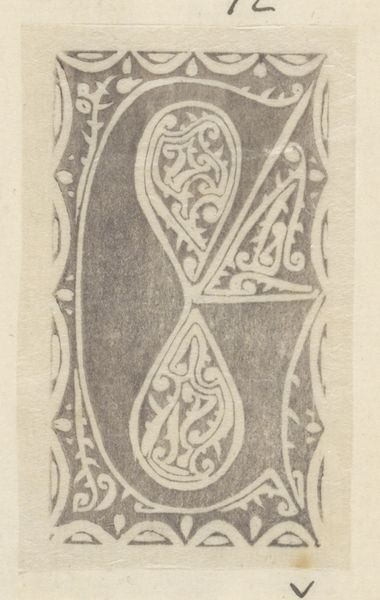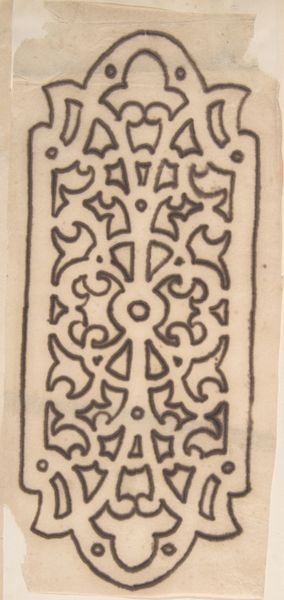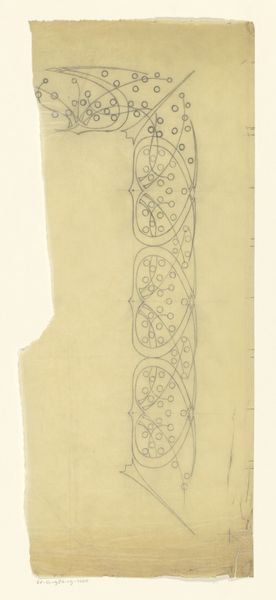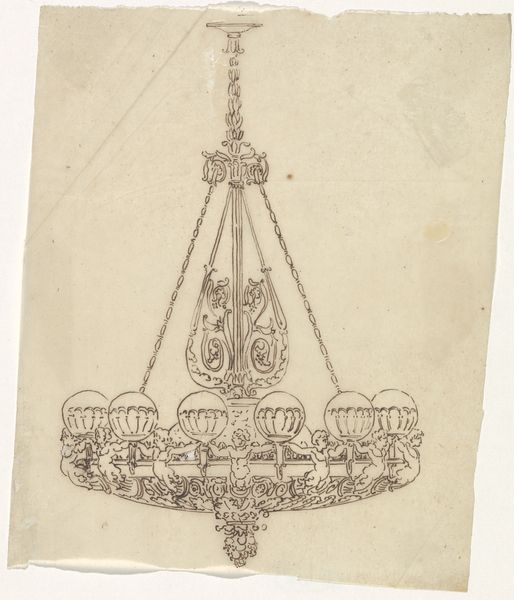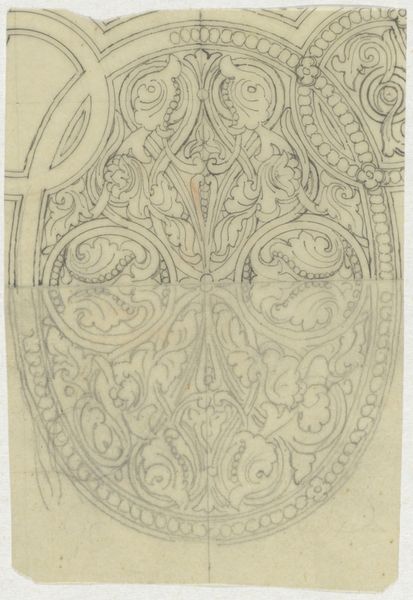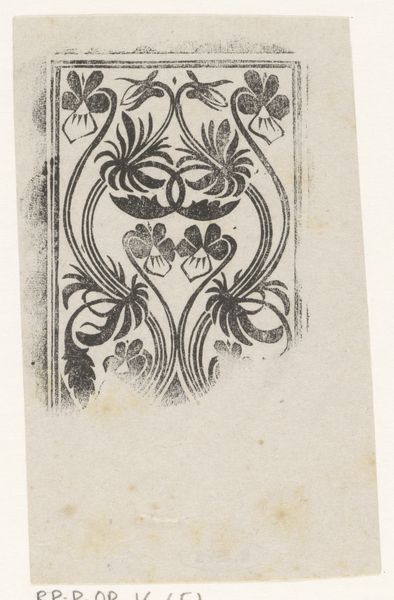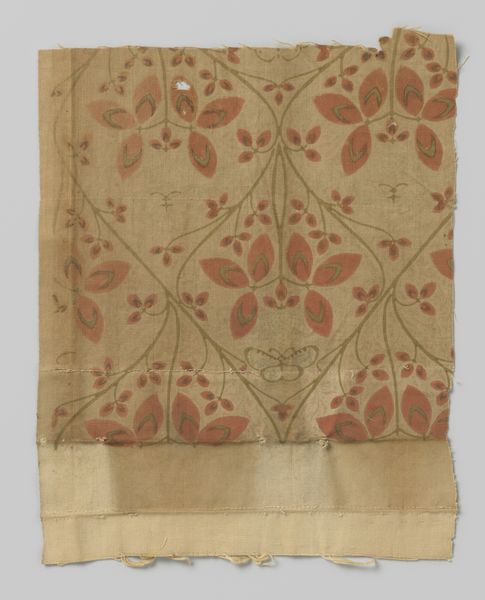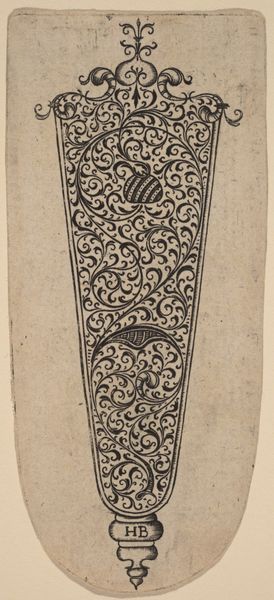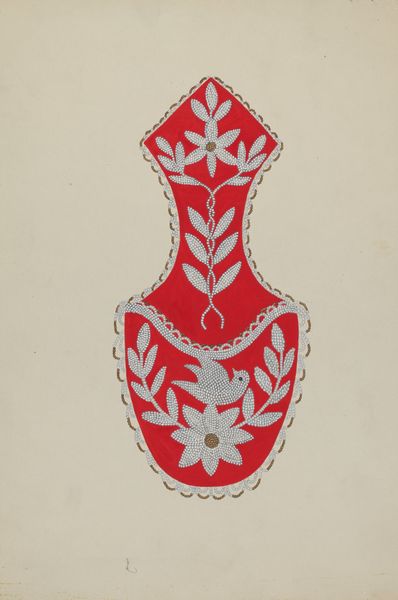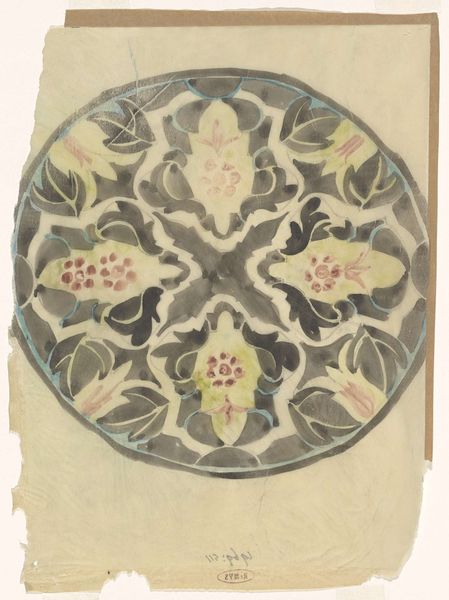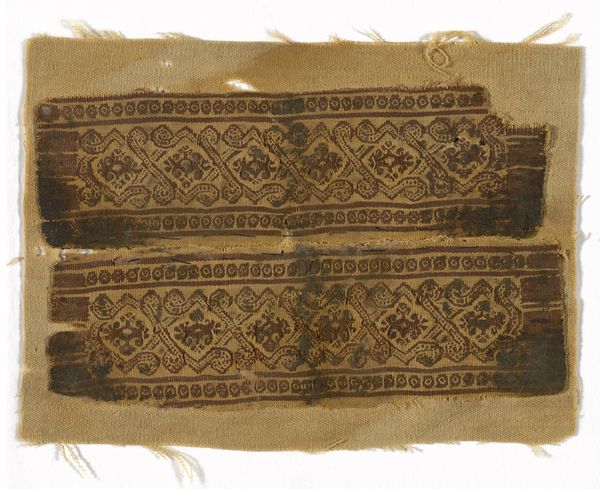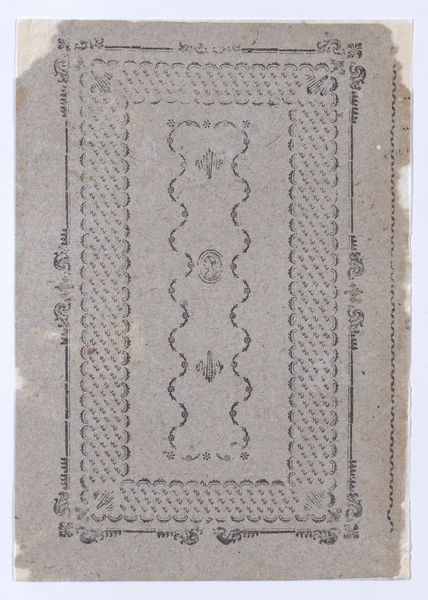
Kantontwerp met een motief van een tas in witte inkt op oranje papier. c. 1920 - 1935
0:00
0:00
Dimensions: length 32 cm, width 24 cm
Copyright: Rijks Museum: Open Domain
Editor: Here we have “Kantontwerp met een motief van een tas in witte inkt op oranje papier,” a design study in white ink on orange paper, likely dating from between 1920 and 1935, by J.H. Pleging-Faber. It strikes me as both delicate and rigidly geometric; it almost resembles an elaborate shield or emblem. What do you see in its composition? Curator: Primarily, I observe a meticulous exploration of form. Note the repetition of curvilinear elements balanced by straight lines and precise geometric shapes. The composition adheres to a rigorous structure; the central floral motif serves as a focal point from which the design radiates outward in a balanced manner. Editor: The symmetry is very apparent. Were the curves purely ornamental, or might they have served another function in the overall structure? Curator: Ornament is structure here; they are inextricable. Consider the negative space created by these swirling forms. The relationship between figure and ground, the push and pull, constructs the work's spatial dynamics. Without those swirling motifs, the negative space flattens and loses dynamism, wouldn't you agree? The medium also holds significant weight here: the orange background intensifies the visibility of the white ink, and vice versa, creating this contrast that defines and refines its details. Editor: That’s a helpful way of thinking about it. It makes the floral aspect of the work seem almost incidental to the overall geometry. Curator: Precisely. The floral elements are subservient to the broader compositional concerns. Do you find this design visually satisfying? Editor: I do now. Before, the bag-like design seemed fairly straightforward, but observing how form is essential to this particular art makes me see how visually stimulating its details can be, such as the repetition of shapes and the intentional use of negative space. Curator: Yes. This piece underscores the power of formal analysis in unveiling the intrinsic qualities of art.
Comments
No comments
Be the first to comment and join the conversation on the ultimate creative platform.
